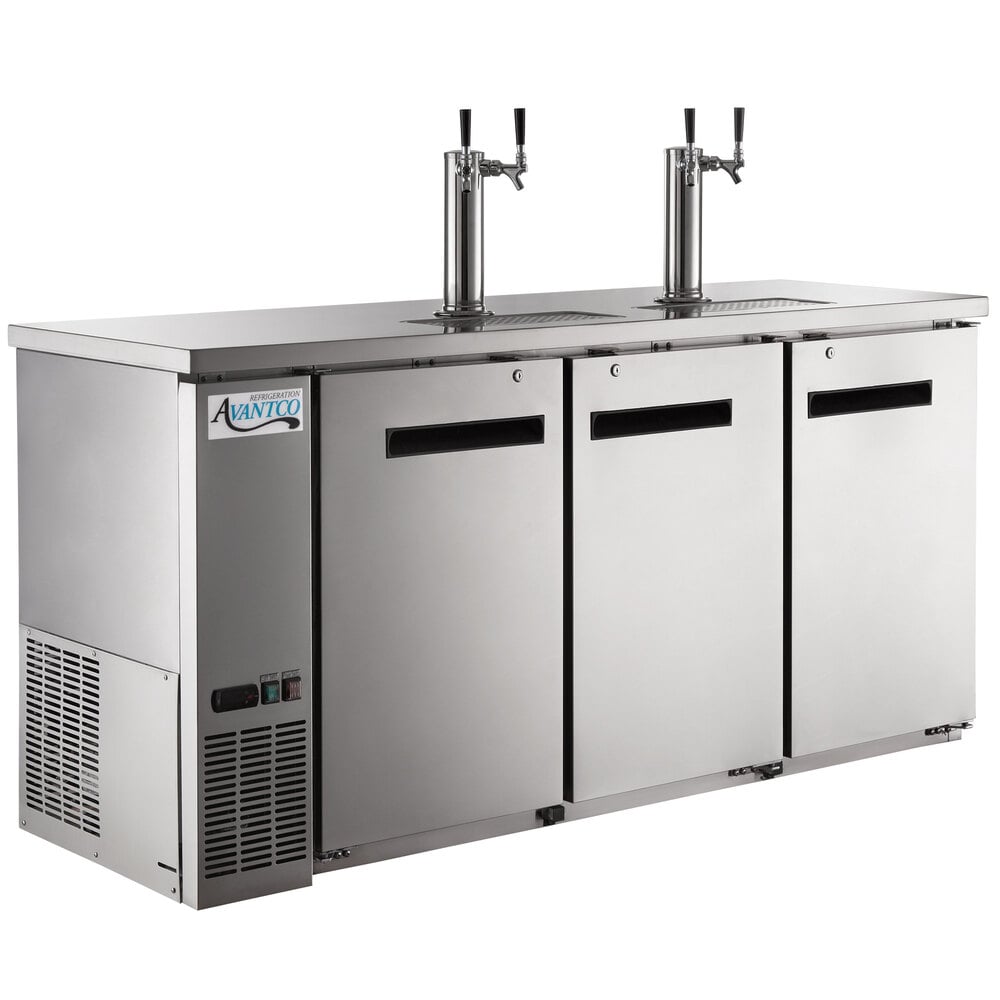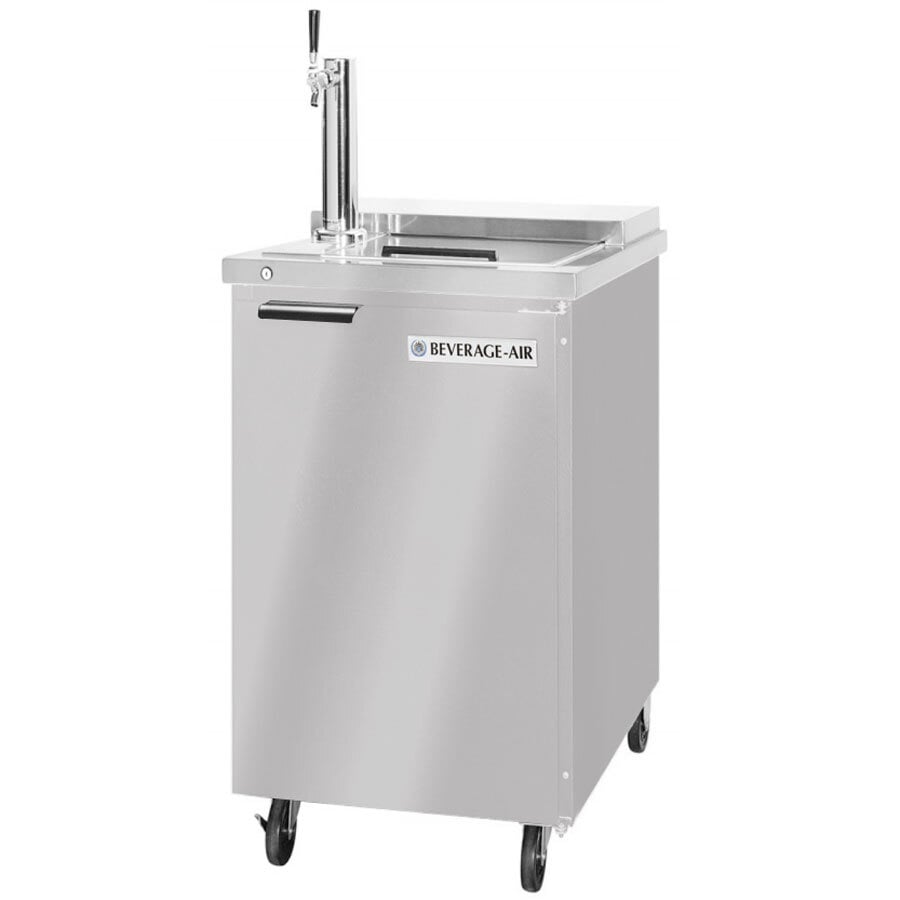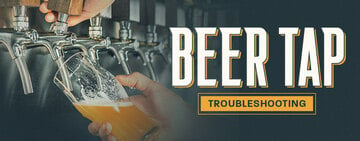Setting up a kegerator is a fairly simple process, but requires a few steps:
1. To begin, if your kegerator included casters, install the casters to the bottom of the unit. Flip the unit over so that it rests on the casters.
2. Attach the tap tower to the kegerator by removing the plug covering the hole with a screwdriver. Feed the tubes in the tap tower through the hole, and pull them into the inside of the kegerator. Use screws to secure the tap tower onto the kegerator, lining up the holes in the tower with the holes on the kegerator.
3. Attach the railing to the kegerator. It should snap into place when aligned with the holes on the top of the cabinet.
4. Install the faucet by screwing it on to the faucet adapter at the front of the tap tower. Screw the black handle onto the faucet.
5. Attach the beer line to the kegerator coupler. Place a rubber washer into the beer line hex nut, and connect the line to the top of the coupler, using a hex nut wrench to secure the line.
6. Make sure the CO2 regulator shut off valve is closed, and then connect the CO2 gas line tube to the regulator. Push the tube firmly into the regulator, using a screw clamp or pliers to ensure it is pushed into place. Connect the opposite end of the gas line tube to the house barb, on the side of the coupler. Again, push the tube firmly to ensure it is pushed into place.
7. Attach the CO2 regulator to the cylinder, making sure the cylinder is closed. Screw the inlet nut into the cylinder valve, and tighten it with a wrench.
8. Attach the coupler to the keg, ensuring the coupler is in the closed position, then screwing the coupler into the locking neck on the keg.
9. Carefully place the CO2 holder into the cabinet mounting it to the holder on the inside or outside of the kegerator. Make sure the regulator is still visible. Open the air tank by turning the wheel on the tank, and moving the shut off valve on the regulator to the "on" position.
10. Calibrate the regulator, and set it to the PSI level. Adjusting the PSI can be done by turning the pressure adjustment with a screwdriver. Adjust the pressure slowly, setting it to your desired PSI; this should be between 10-15 PSI. Then, set the temperature to be between 36-40 degrees Fahrenheit.
11. Carefully place the keg in the bottom of the cabinet, and close the kegerator door. At this point, you will be ready to dispense beer!










